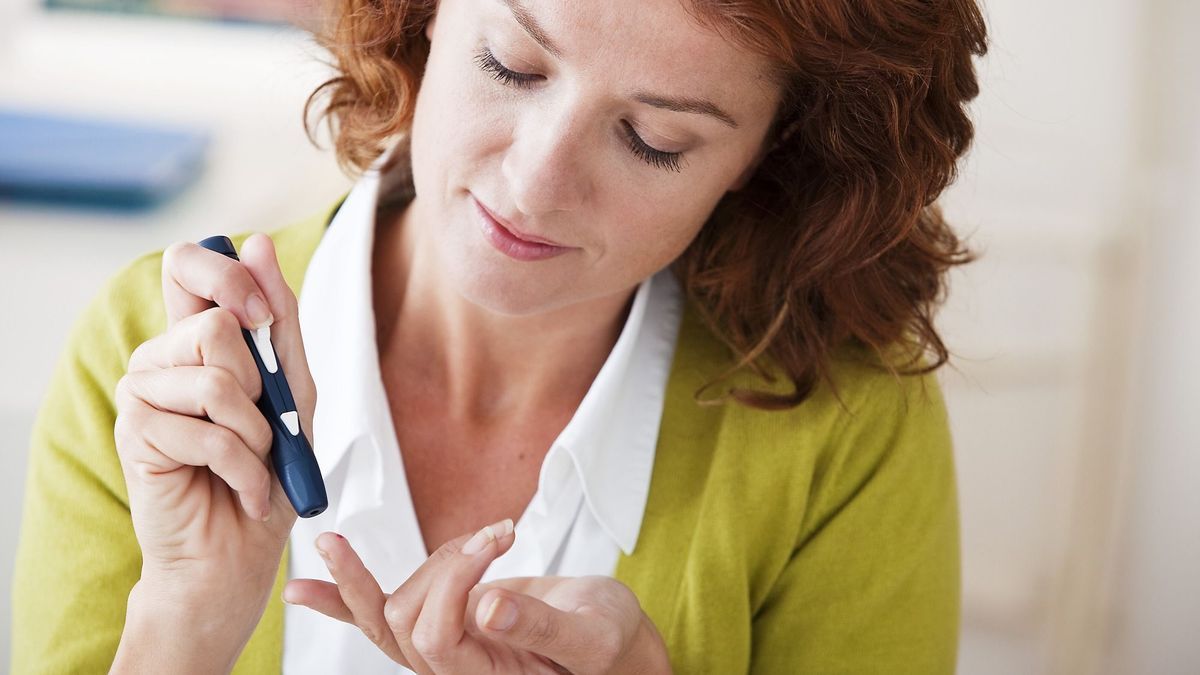
Fatigue, intense thirst, dizziness… All signs that can reveal hyperglycemia. But, at what blood sugar level do you become diabetic? What are the health risks ? What to do to regulate it? We take stock with Dr Jean-Michel Cohen, nutritionist.
Diabetes is a chronic disease characterized by abnormally high blood sugar levels. The cause is insufficient production of insulin by the pancreas. Treatment must be followed to control diabetes and limit the risk of serious health complications such as kidney damage, heart damage or even nerve damage. A healthy lifestyle is also essential, it consists of reducing risk factors: in addition to adopting a varied and balanced diet, weight loss is essential to lower blood sugar levels. But, what is a dangerous blood sugar level? At what blood sugar level are you considered diabetic? What are the risks for the body?
What is blood sugar?
Blood sugar refers to the level of glucose (amount of sugar) in the blood. Blood sugar is considered normal when it is between 0.70g/l and 1.10g/l of fasting blood. It undergoes numerous variations during the day: “it increases after a meal up to 1.4 g/l, then returns to normal, generally 2 hours after eating. On the contrary, it can decrease in the event of prolonged fasting or significant physical activity”, details Dr Jean-Michel Cohen, author of the anti-diabetes guide for dummies (Ed.First). Conversely, we speak of hypoglycemia when the blood sugar level is too low. This state can be favored by taking certain medications.
At what blood sugar level do you become diabetic?
Diabetes is a chronic disease characterized by hyperglycemia, that is, excess sugar in the blood. It is linked to the fact that the pancreas does not produce enough insulin, a hormone that allows glucose to be stored and used by cells. “If insulin is insufficient or if it can no longer fulfill its role correctly, glucose can no longer be used by the cells, it accumulates in the blood and passes into the urine,” explains the nutritionist.
We speak of diabetes when blood sugar is greater than or equal to 1.26 g/l on an empty stomach or equal to or greater than 2 g/l at any time of the day. There are three types of diabetes: type 1 diabetes (insulin dependent), type 2 diabetes (non-insulin dependent) and gestational diabetes which occurs during pregnancy.
What are the symptoms of dangerous blood sugar levels?
Temporary hyperglycemia may go unnoticed. On the other hand, when it becomes chronic, the disease can manifest itself by different symptoms such as:
- Significant thirst;
- A frequent need to urinate;
- Profuse urine;
- A feeling of dry mouth;
- Intense fatigue;
- Dizziness;
- Irritability;
- Blurred vision.
If this lack of water is not corrected, dehydration can worsen and lead to impaired consciousness.
Diagnosis of dangerous blood sugar levels
Beyond the symptoms, the diagnosis of hyperglycemia is based on a blood test taken in a medical analysis laboratory, on an empty stomach. Hyperglycemia is proven when it is between 0.70g/l and 1.10g/l.
What are the risks of high blood sugar levels?
In the short term, high blood sugar can lead to significant dehydration which, in the most severe cases, can cause coma or death. During treatment, episodes of hypoglycemia, hyperglycemia and ketoacidosis may occur. In the long term, dangerous blood sugar levels harm the body and expose you to complications from diabetes. The blood vessels are altered, leading to damage to several organs including the heart, arteries, eyes (diabetic retinopathy leading to reduced vision, cataracts or glaucoma), hands, feet, nerves, kidneys and than the teeth. People with diabetes have a higher risk of cardiovascular diseases (stroke, heart attack, etc.).
How to lower blood sugar?
The treatment of hyperglycemia is essentially based on compliance with health and diet rules. A diet intended to promote weight loss should be undertaken. It consists in particular of limiting the quantity of carbohydrates consumed at meal times. “At the table, it is recommended to chew food well to increase satiety, to ensure that a meal lasts longer than 20 minutes and to monitor your weight. A moderate restriction is sufficient, at 1600 kcal for a woman and 1800 kcal for a man”, advises Dr. Jean-Michel Cohen. Another important aspect for reducing your blood sugar level: practicing regular physical activity including at least 30 minutes of brisk walking per day or 1 hour of sporting activity every other day. At the same time, this helps reduce all cardiovascular risk factors (cholesterol, high blood pressure, type 2 diabetes, smoking, age).
What medications for diabetes?
Treatment for type 1 diabetes consists of multiple daily insulin injections. He must be prosecuted for life. The dose of insulin is adapted to the person’s weight and the blood sugar level measured throughout the day.
As for type 2 diabetes, treatment is essentially based on hygienic and dietary measures. If this fails, medication may be prescribed. People with diabetes must scrupulously follow their treatment and report any adverse effects that occur to their doctor.
